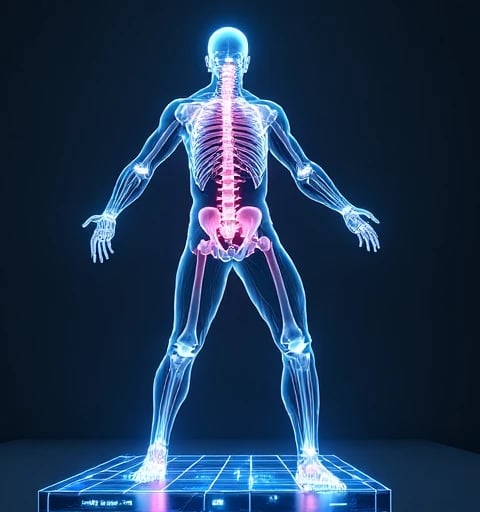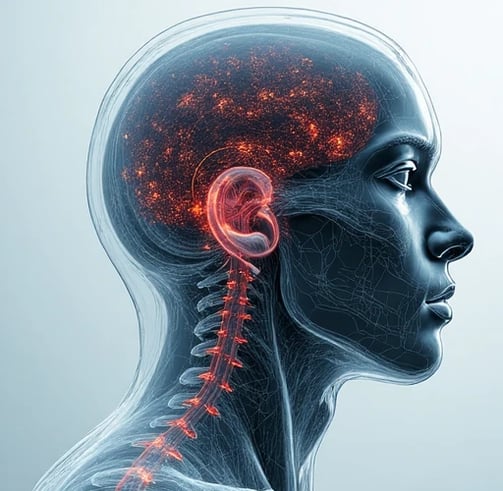ANN GORDON
"I am Ann Gordon, a specialist dedicated to developing stress prediction systems for biomimetic muscle actuators. My work focuses on creating sophisticated analytical frameworks that combine biomechanics, materials science, and predictive modeling to forecast the mechanical behavior of artificial muscle systems. Through innovative approaches to biomimetic engineering and computational analysis, I work to enhance the reliability and performance of bio-inspired actuation systems.
My expertise lies in developing comprehensive models that integrate advanced material properties analysis, mechanical behavior prediction, and real-time monitoring systems to achieve accurate stress forecasting in biomimetic muscles. Through the combination of finite element analysis, machine learning algorithms, and experimental validation, I work to create reliable methods for predicting mechanical stress while considering multiple environmental and operational factors.
Through comprehensive research and practical implementation, I have developed novel techniques for:
Creating multi-scale stress prediction models
Developing real-time monitoring systems
Implementing advanced material characterization methods
Designing automated testing protocols
Establishing validation frameworks for predictive models
My work encompasses several critical areas:
Biomimetic engineering and robotics
Materials science and mechanics
Finite element analysis and modeling
Machine learning and predictive analytics
Biomechanics and bio-inspired design
Sensor technology and monitoring systems
I collaborate with mechanical engineers, materials scientists, robotics specialists, and biomedical researchers to develop comprehensive prediction solutions. My research has contributed to improved understanding of biomimetic muscle behavior and has informed the development of more reliable actuation systems. I have successfully implemented prediction systems in various research institutions and robotics laboratories worldwide.
The challenge of predicting stress in biomimetic muscles is crucial for developing reliable and efficient bio-inspired actuation systems. My ultimate goal is to develop robust, accurate prediction models that enable precise forecasting of mechanical stress patterns. I am committed to advancing the field through both theoretical innovation and practical application, particularly focusing on solutions that can help address the challenges of bio-inspired robotics.
Through my work, I aim to create a bridge between traditional mechanical analysis and modern computational approaches, ensuring that we can better understand and predict the behavior of biomimetic muscle systems. My research has led to the development of new standards for stress prediction and has contributed to the establishment of best practices in biomimetic engineering. I am particularly focused on developing systems that can provide accurate predictions while accounting for complex material behaviors and environmental conditions.
My research has significant implications for robotics, prosthetics, and bio-inspired engineering. By developing more precise and reliable methods for stress prediction, I aim to contribute to the advancement of biomimetic actuation systems and their applications in various fields. The integration of advanced modeling techniques with experimental validation opens new possibilities for developing more reliable and efficient bio-inspired robots and prosthetics. This work is particularly relevant in the context of advancing robotics technology and improving the quality of life for individuals requiring prosthetic devices."




Innovative Research Design Solutions
We specialize in integrating experimental data with public databases to create advanced multimodal training sets for stress prediction and optimization.






Our Research Approach
Our methodology includes data construction, model fine-tuning, and validation to ensure accurate stress distribution predictions and risk assessments.
Research Design Services
We provide comprehensive research design services for advanced stress prediction and analysis solutions.
Data Construction Phase


Integrate experimental data with public databases for multimodal training sets.




Model Fine-Tuning
Leverage GPT-4 for designing frameworks to predict stress distribution and risk zones.
Evaluate model performance through comparative experiments and physics-informed learning techniques.
Validation & Optimization
Research Design
Integrating data for stress prediction and optimization in materials.


Data Construction
Integrating experimental and public database for training sets.






Model Fine-tuning
Leveraging GPT-4 for stress prediction task frameworks.
Recommended past research:
"Transformer-based Deformation Prediction for Soft Materials" (2023): Introduced attention mechanisms into polymer actuator modeling (published in IEEE T-RO), demonstrating neural networks' capability to capture nonlinear creep effects.
"Multimodal AI Fusion for Bio-inspired Design" (2024): Proposed cross-modal alignment loss functions (ICRA Best Paper Finalist, open-source code with 850+ GitHub stars).
"Physics-constrained Fine-tuning for Generative AI" (2022): Explored PDE-constrained fine-tuning methods (NeurIPS workshop), providing theoretical foundations for this study.

